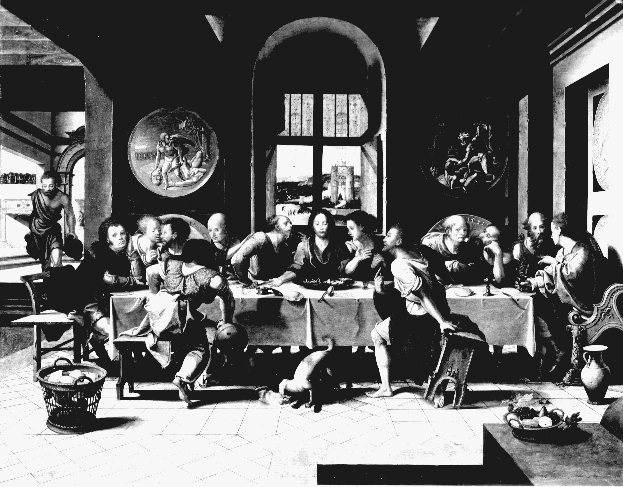
Pieter Coecke. The Last Supper. 1531. Panel, 25 x32 l/4 in. Musées Royaux des Beaux-Arts, Brussels.
The Antwerp Mannerist master, Coecke was a typical Romanist of the second wave, revealing numerous Italianizing elements in the details of his paintings and in his desire to construct rational space. Nevertheless, indigenous qualities appear in his dramatic movement, which suggests a chastened Van Orley, and in his attempt to create space by silhouetted layers.
His Last Supper (with over forty versions. . . ), while renewing Eucharistic symbolism, follows older conceptions by placing Judas on the spectator's side of the table. However, the influence of Leonardo's famous model of the same scene can also be seen, seemingly combined withJoos van Clove's Paris version of about 1524. In the manifold activities of Coecke's apostles Leonardo's version is somewhat disturbed. To compensate Coecke placed another figure on Judas's side of the table, creating a spatial triangle leading to Christ. He also classicized the architectural setting. But the landscape view outside the window claims too much attention, and the vault above Christ's head is too high to suggest a halo. — Cutler, pp. 455-56
Bibliography
Cutler, Charles D. Northern Paintingfrom Pucelle to Bruegel: Fourteenth, Fifteenth, and Sixteenth Centuries. New York: Holt, Rhinehart, and Winston, 1973.
Van Puyvelde, Leo. Flemish Painting from the Van Eycks to Metsys. Trans. Alan Kendall. New York: McGraw-Hill, [1968?]
Last modified December 2001
